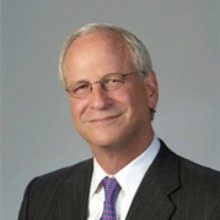
Common Making Decisions Challenge:
How do we make a decision that takes experience and knowledge into account and also factors in the changes occurring continually in today’s environment? How do you make sure that all appropriate elements are considered and that a process is employed that not only works but can also be taught to your team? Bottom line: How can you improve your judgment skills and those of your team?
The Solution:
There have been many studies that outline how decisions are made. Here are the choices often presented – which are your top two from the following list?
- I wait and see
- I let the universe decide
- I am a risk taker
- I trust my intuition
- I ask others what to do
- I weigh the pros and cons
- I am stuck
- None of the above?
Executives are generally split between trusting intuition and weighing the pros and cons, with a smattering of the other choices. (Less experienced managers also often ask others to make decisions for them, while brash ones look for the biggest risk/reward ratio.) Yet, the best course is one that combines trusting intuition AND weighing pros and cons since neither alone will produce an optimal decision.
The Thought Process:
Understanding why you need to both tap into intuition AND weigh the pros and cons is critical for making powerful and actionable decisions.
Intuition is based in the past – it is your accumulated knowledge that represents what you have learned based on previous actions and your innate understanding of how well they have worked. Intuition provides a course of action without the need to think, as intuition happens in a flash. This is what saved us from being eaten by saber-toothed tigers and becoming extinct as a species. It is also why different people utilizing intuition will make different decisions: they have different backgrounds, knowledge and experiences.
Weighing pros and cons is future oriented; it gets us to think through possible courses of action based not only on thinking through how they might work for us, but also on how competitors and customers might react when we pursue them. Here we imagine possibilities, which should lead us to ask questions in the presence of others instead of shouldering a decision alone. Even though we are asking others for input, we still own the decision making process and the outcomes.
Combine the two methods and enlarge the leadership conversations to as many stakeholders as possible. You will have a decision that “feels’ right based on the total of all of your past experiences, proactively and broadly envisions the needs of the future, and connects and aligns you with everyone needed to carry out the actions based on the decision.
Think Differently to Act More Powerfully!
Related: 7 Top Leadership Tips of 2013!
Alan Berson is an author, keynote speaker, executive coach, Learning Director at Wharton Executive Education and the CEO of Leadership Conversation LLC based in Potomac, MD. His recent book, LEADERSHIP CONVERSATIONS: Challenging High-Potential Managers to Become Great Leaders, was released by Jossey-Bass in March of this year and was named as one of the top 10 management/leadership books by Amazon.com. An extensive review can be found at Knowledge@Wharton.


